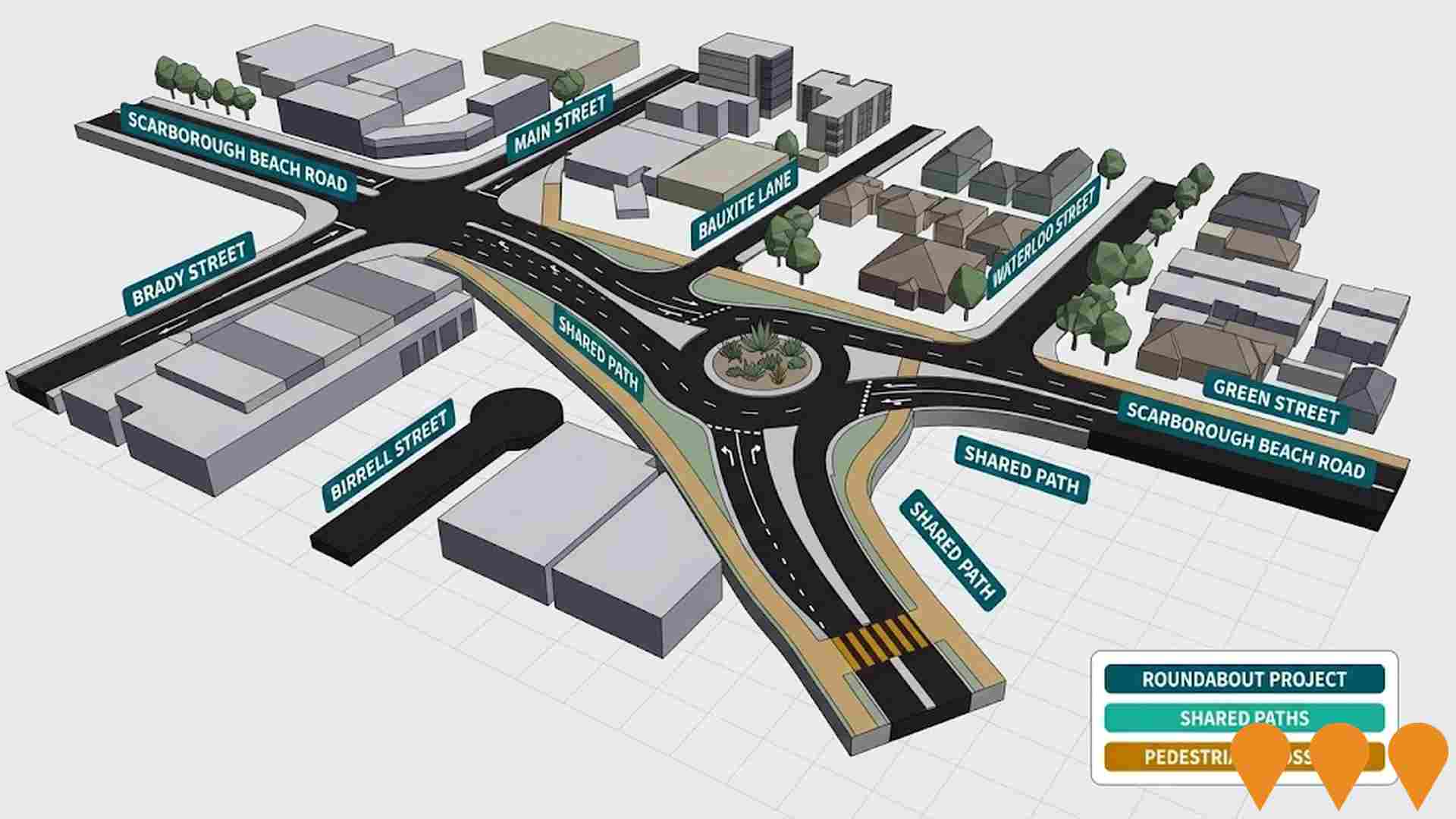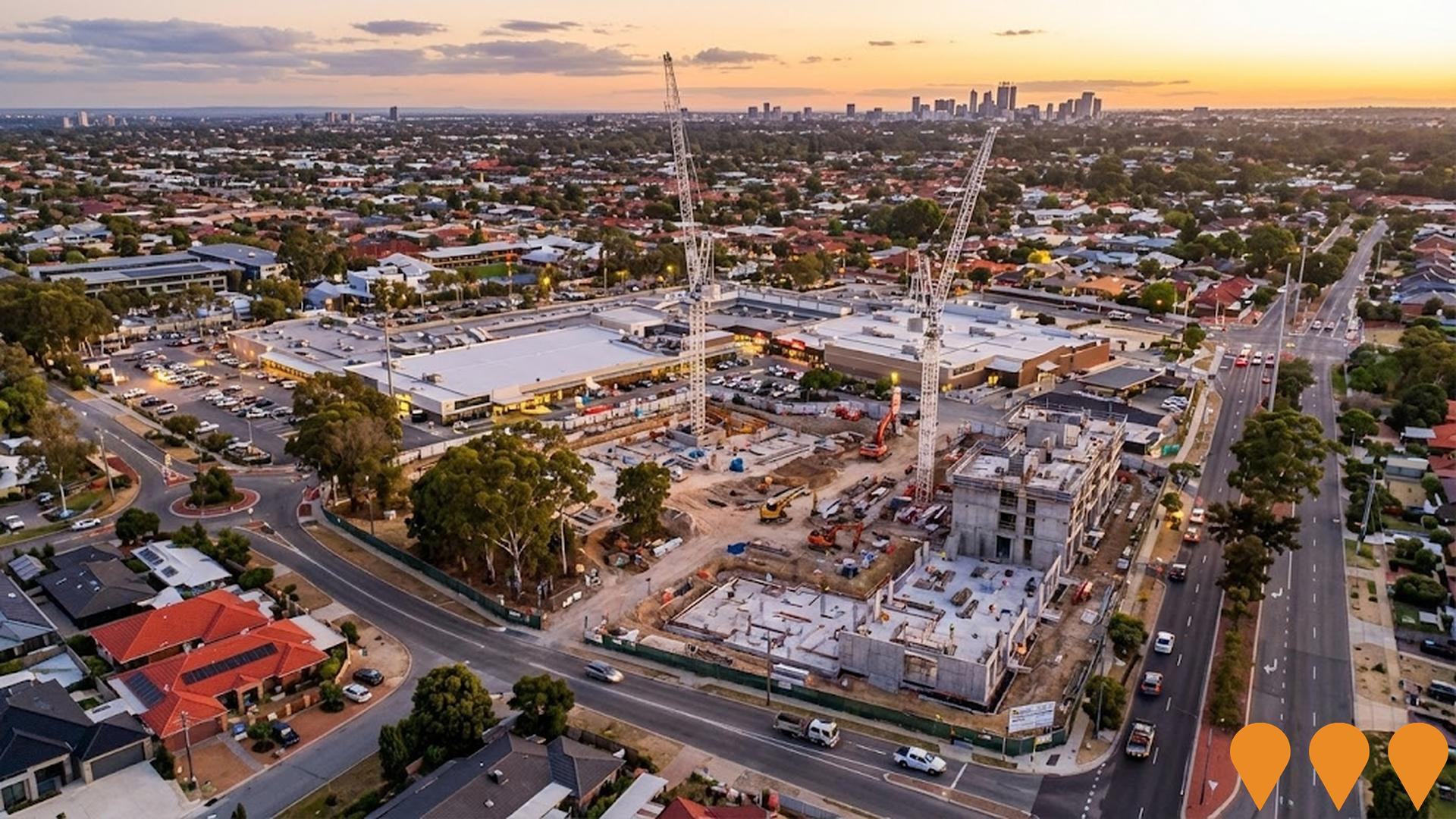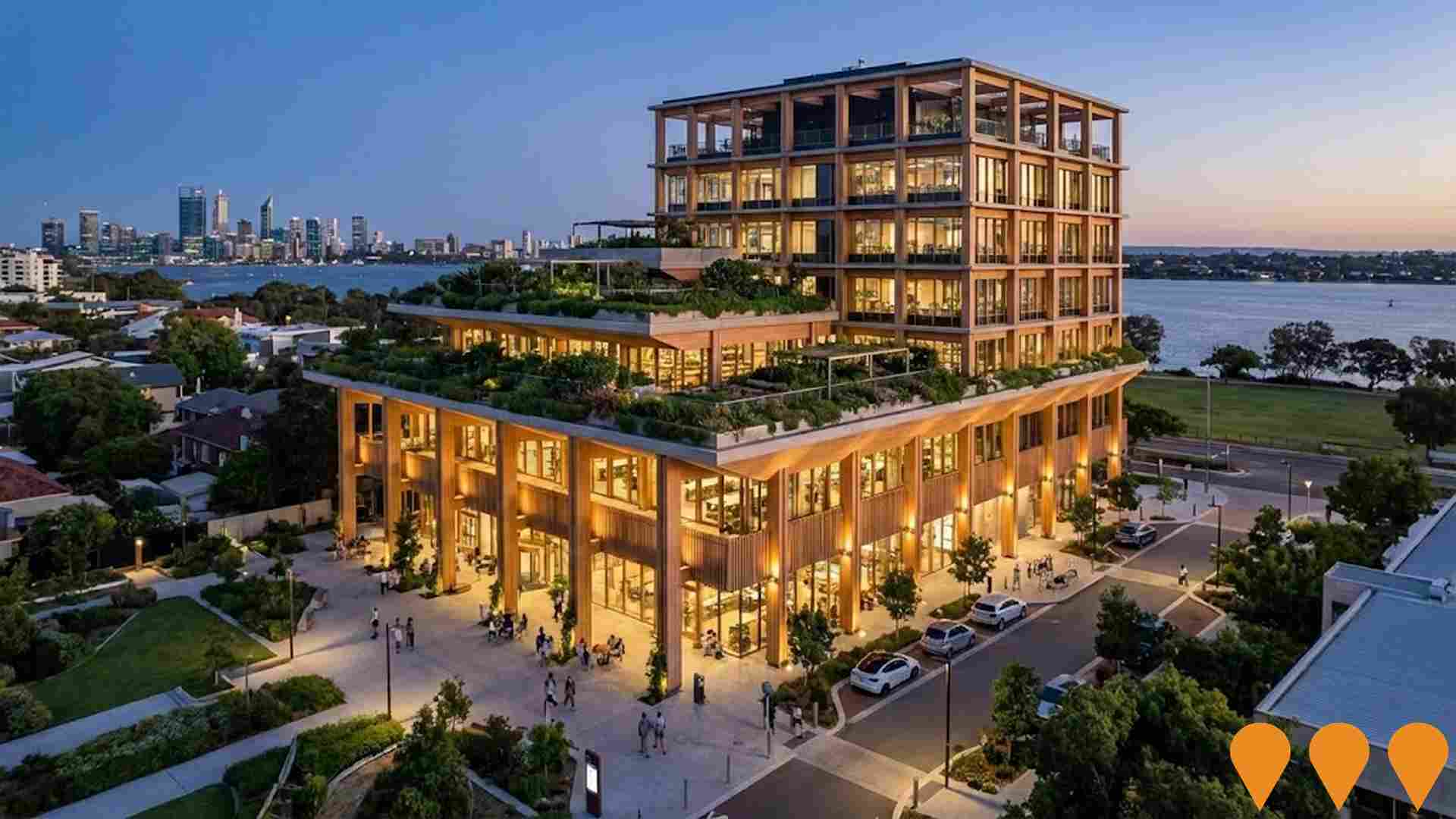Chart Color Schemes
est. as @ -- *
ABS ERP | -- people | --
2021 Census | -- people
Sales Activity
Curious about local property values? Filter the chart to assess the volume and appreciation (including resales) trends and regional comparisons, or scroll to the map below view this information at an individual property level.
Find a Recent Sale
Sales Detail
Population
Population growth drivers in Yokine - Coolbinia - Menora are strong compared to national averages based on AreaSearch's ranking of recent, and medium to long-term trends
Yokine-Coolbinia-Menora's population was 18,578 as of November 2025. This showed an increase of 1,512 people from the 2021 Census figure of 17,066, indicating a growth rate of 8.9%. The change was inferred from ABS's estimated resident population of 18,580 in June 2024 and an additional 67 validated new addresses since the Census date. This resulted in a density ratio of 2,712 persons per square kilometer, placing it in the upper quartile nationally according to AreaSearch assessments. The area's growth rate was within 1.9 percentage points of its SA3 area's (10.8%), indicating strong growth fundamentals. Overseas migration contributed approximately 92.3% of overall population gains recently.
AreaSearch uses ABS/Geoscience Australia projections for each SA2 area, released in 2024 with a base year of 2022. For areas not covered by this data and post-2032 growth estimation, AreaSearch utilises ABS's Greater Capital Region projections (released in 2023, based on 2022 data). Based on projected demographic shifts, the area is expected to grow by approximately 1,120 persons to reach a total of 19,698 by 2041, marking a growth rate of around 6.0% over the 17-year period.
Frequently Asked Questions - Population
Development
AreaSearch assessment of residential development activity positions Yokine - Coolbinia - Menora among the top 25% of areas assessed nationwide
Yokine-Coolbinia-Menora has recorded approximately 76 residential properties granted approval annually. Over the past five financial years, from FY21 to FY25, around 381 homes were approved, with an additional 40 approved so far in FY26. On average, 3.9 new residents have been added per year for every home built during this period.
This high demand exceeds new supply, typically leading to price growth and increased buyer competition. The average construction cost value of new properties is $515,000, indicating a focus on the premium segment with upmarket properties. In FY26, there have been $6.5 million in commercial approvals, suggesting limited commercial development focus.
Comparatively, Yokine-Coolbinia-Menora shows similar development activity per person when measured against Greater Perth, maintaining market balance consistent with the broader area. New development comprises 65% standalone homes and 35% attached dwellings, offering a range of housing types from spacious family homes to more affordable compact options. Interestingly, developers are building more traditional houses than the current mix suggests (46% at Census), indicating strong demand for family homes despite density pressures. With approximately 230 people per approval, Yokine-Coolbinia-Menora reflects a transitioning market. Population forecasts indicate it will gain around 1,122 residents by 2041. At current development rates, new housing supply should comfortably meet demand, providing favourable conditions for buyers and potentially supporting growth beyond current population projections.
Frequently Asked Questions - Development
Infrastructure
Yokine - Coolbinia - Menora has limited levels of nearby infrastructure activity, ranking in the 16thth percentile nationally
Thirty projects have been identified by AreaSearch as potentially impacting the area's performance. Key projects include The Coolbinia, Breckler Park 3x3 Basketball Court, Scarborough Beach Road and Green Street Roundabout, and City of Stirling Infrastructure Program 2024-25. The following list details those likely to be most relevant.
Professional plan users can use the search below to filter and access additional projects.
INFRASTRUCTURE SEARCH
 Denotes AI-based impression for illustrative purposes only, not to be taken as definitive under any circumstances. Please follow links and conduct other investigations from the project's source for actual imagery. Developers and project owners wishing us to use original imagery please Contact Us and we will do so.
Denotes AI-based impression for illustrative purposes only, not to be taken as definitive under any circumstances. Please follow links and conduct other investigations from the project's source for actual imagery. Developers and project owners wishing us to use original imagery please Contact Us and we will do so.
Frequently Asked Questions - Infrastructure
Scarborough Beach Road Activity Corridor Plan (Mount Hawthorn section)
Long term planning and place making framework for the Scarborough Beach Road activity corridor through Mt Hawthorn. The project implements the state Scarborough Beach Road Activity Corridor Framework at a local level by guiding future development in the Mt Hawthorn Town Centre between Braithwaite Park and Britannia Road, including parts of Oxford Street. Led by the City of Vincent with input from the Western Australian Planning Commission, it aims to transform Scarborough Beach Road into a vibrant mixed use main street with higher quality public spaces and tree canopy, safer walking and cycling, and better integration with public transport and local businesses.
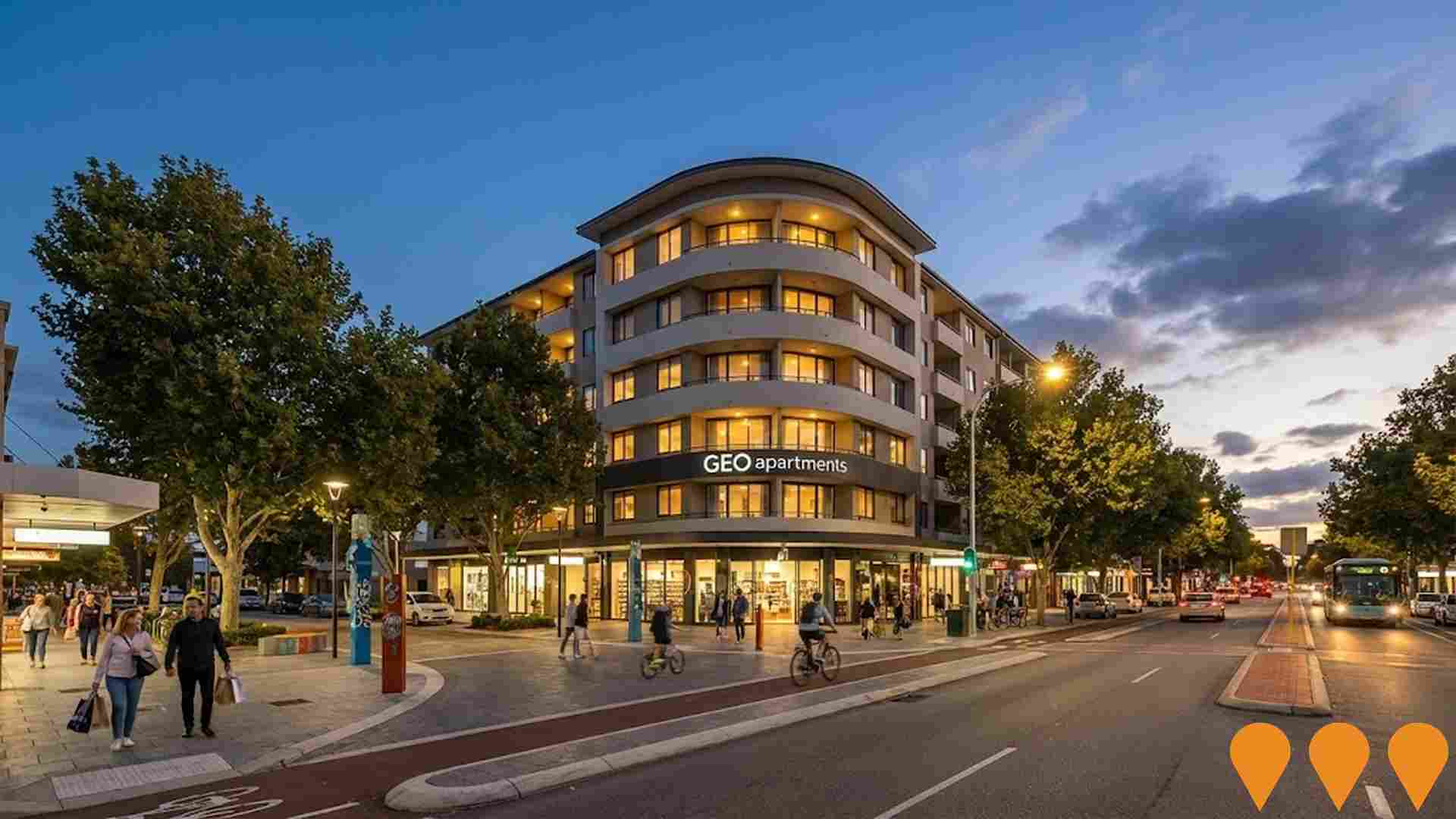
Litis Stadium Development and Britannia Reserve Upgrades
Upgrade program delivering the Britannia Reserve Landscape Master Plan, focused on Litis Stadium and the north west corner of the reserve. Works include demolition of the old grandstand and ablution block, construction of new multi sport changerooms and public toilets, upgrades to Floreat Athena clubrooms, improved paths and landscaping, and new sports lighting to meet National Premier League and major training standards for football and gridiron.
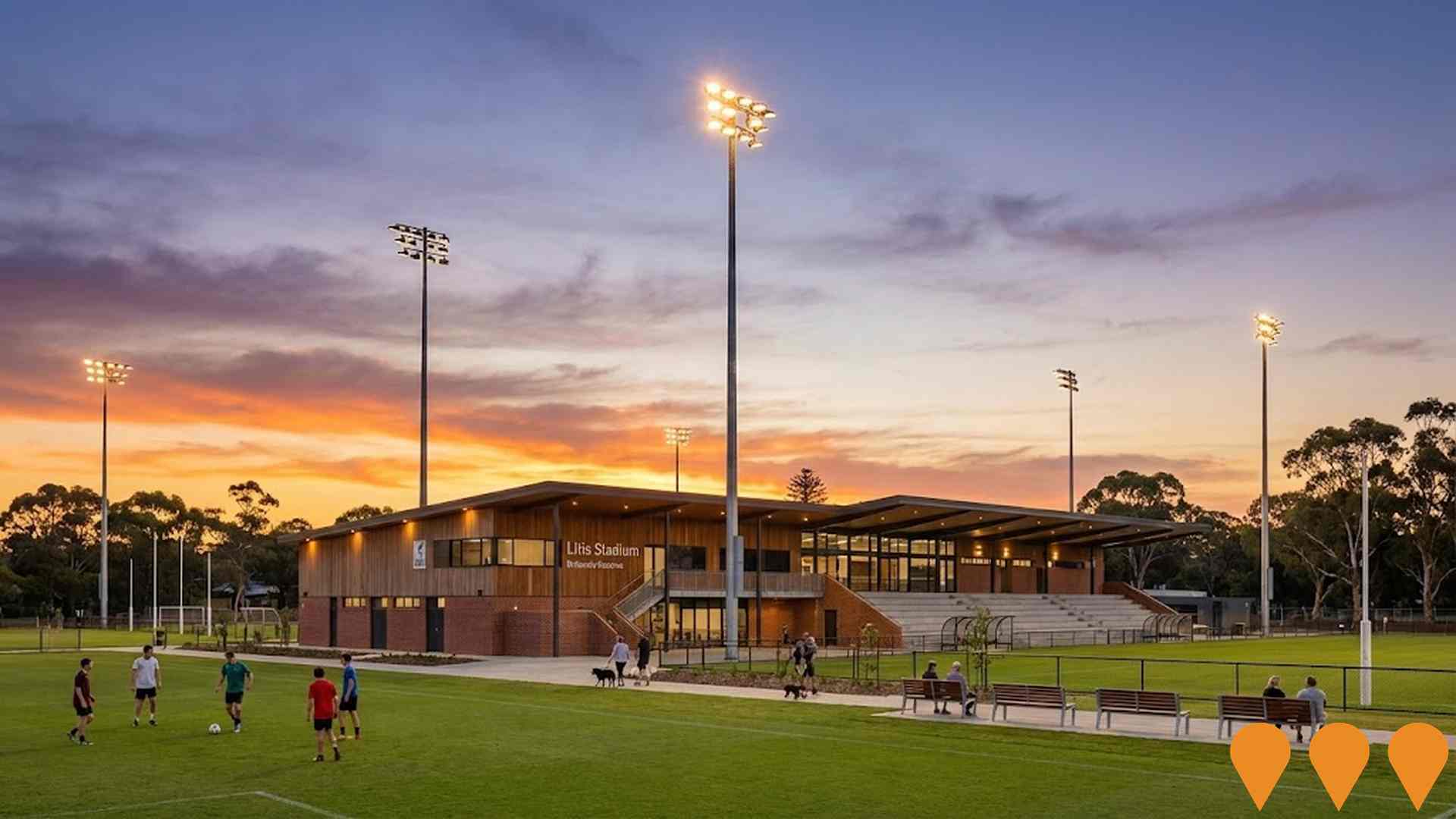
Alma Square
Alma Square is a landmark mixed-use development transforming North Perth's town centre, featuring 108 residential apartments across 40 floor plans, over 1,500 square metres of ground-floor retail and hospitality venues, and 7 commercial tenancies. The 8-level development offers resort-style amenities including a swimming pool, gym, sauna, cinema, and rooftop sky lounge with panoramic CBD views. Designed by Space Collective Architects and Place Fabric, the project blends modern design with North Perth's heritage character. With a 7-star NatHERS rating, solar power, EV charging infrastructure, and sustainable features, construction commenced September 2025 with completion expected Q1 2028.
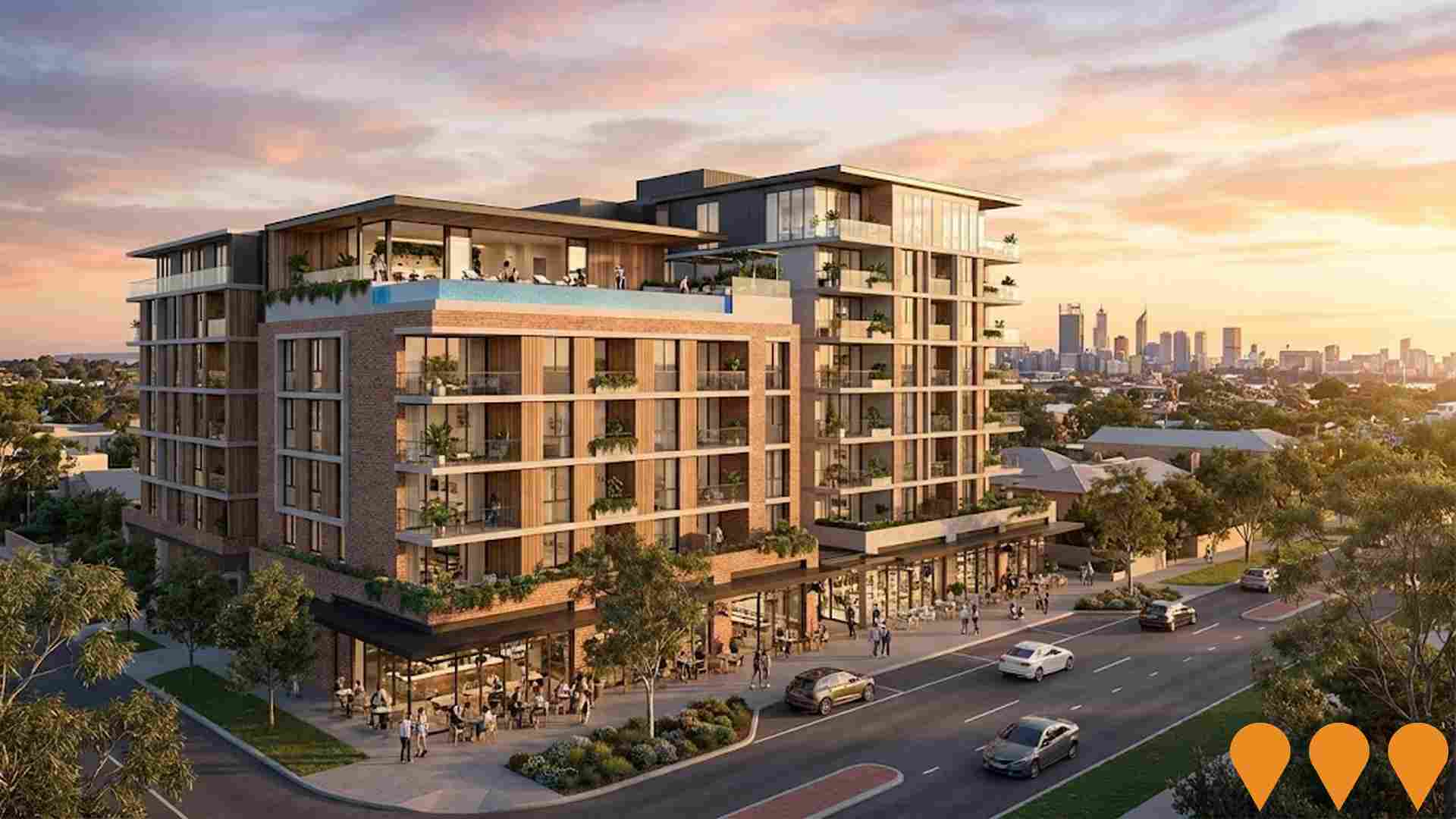
The Coolbinia
The Coolbinia is a five-storey mixed-use development featuring 33 ultra-large residences comprising two, three and four-bedroom apartments and townhomes, inspired by Milan apartments and 1920s Art Deco architecture. The project includes ground-floor retail spaces with a cafe, wine bar, and wellness center, creating a village hub for the community. Designed by award-winning MJA Studio with landscaping by CAPA, residences feature dual-aspect floor plans, expansive private terraces, and sustainable design targeting five green stars. Amenities include a gym, yoga studio, sauna, rooftop BBQ terrace, dog wash, and solar-powered common areas with EV charging provisions.
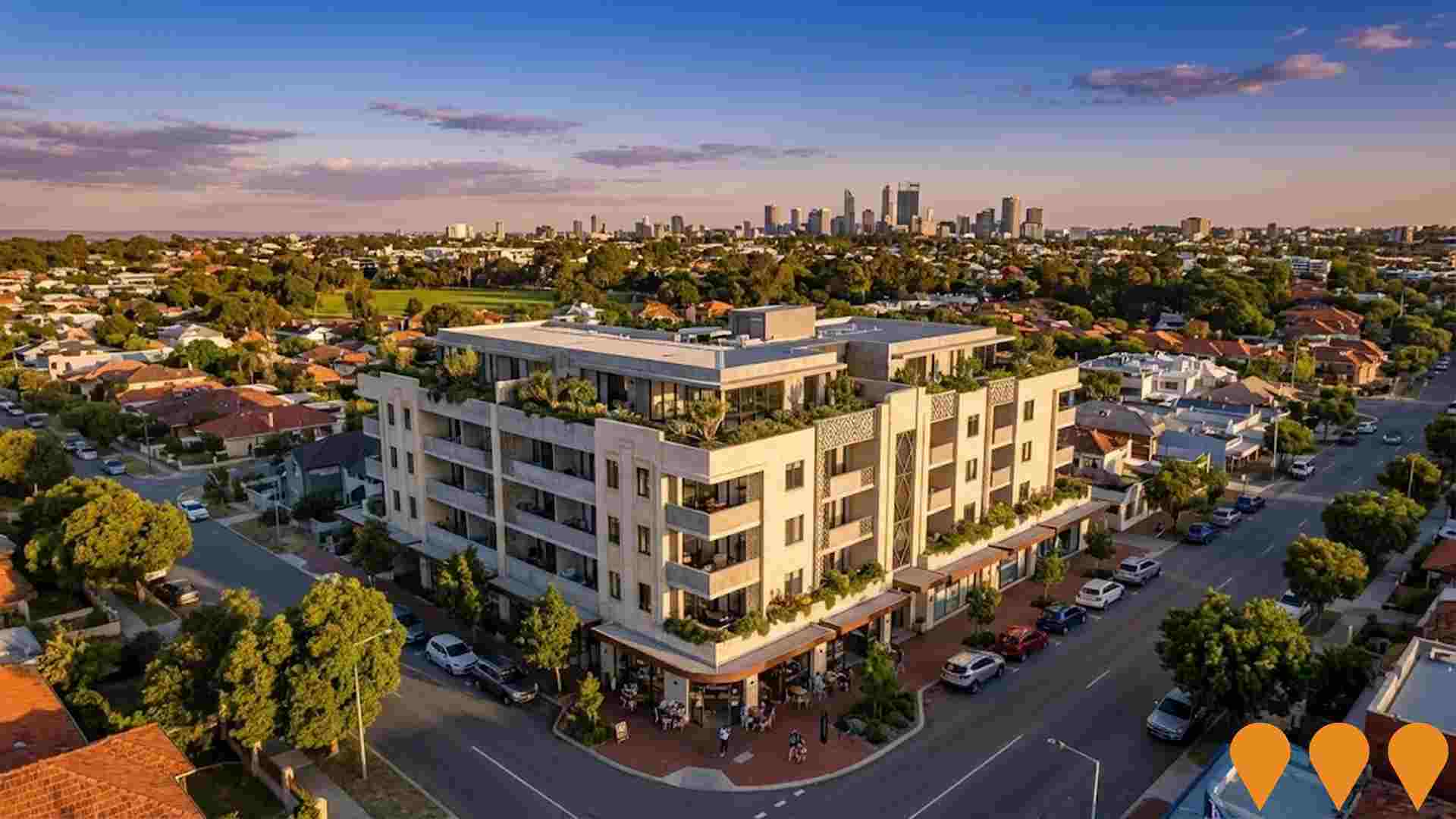
North Perth / Mount Lawley Underground Power Project
Conversion of overhead electricity distribution network to underground power in parts of North Perth and Mount Lawley. Western Power and the City of Vincent are working together to install new underground cabling, primary equipment including transformers and switchgear units, and LED streetlights. The detailed design phase is currently in progress. Primary equipment will be relocated from overhead poles to ground-level installations in parks, public open spaces, road reserves and verges. This is Project 347 in Vincent's underground power program, one of eight project areas planned across the City.
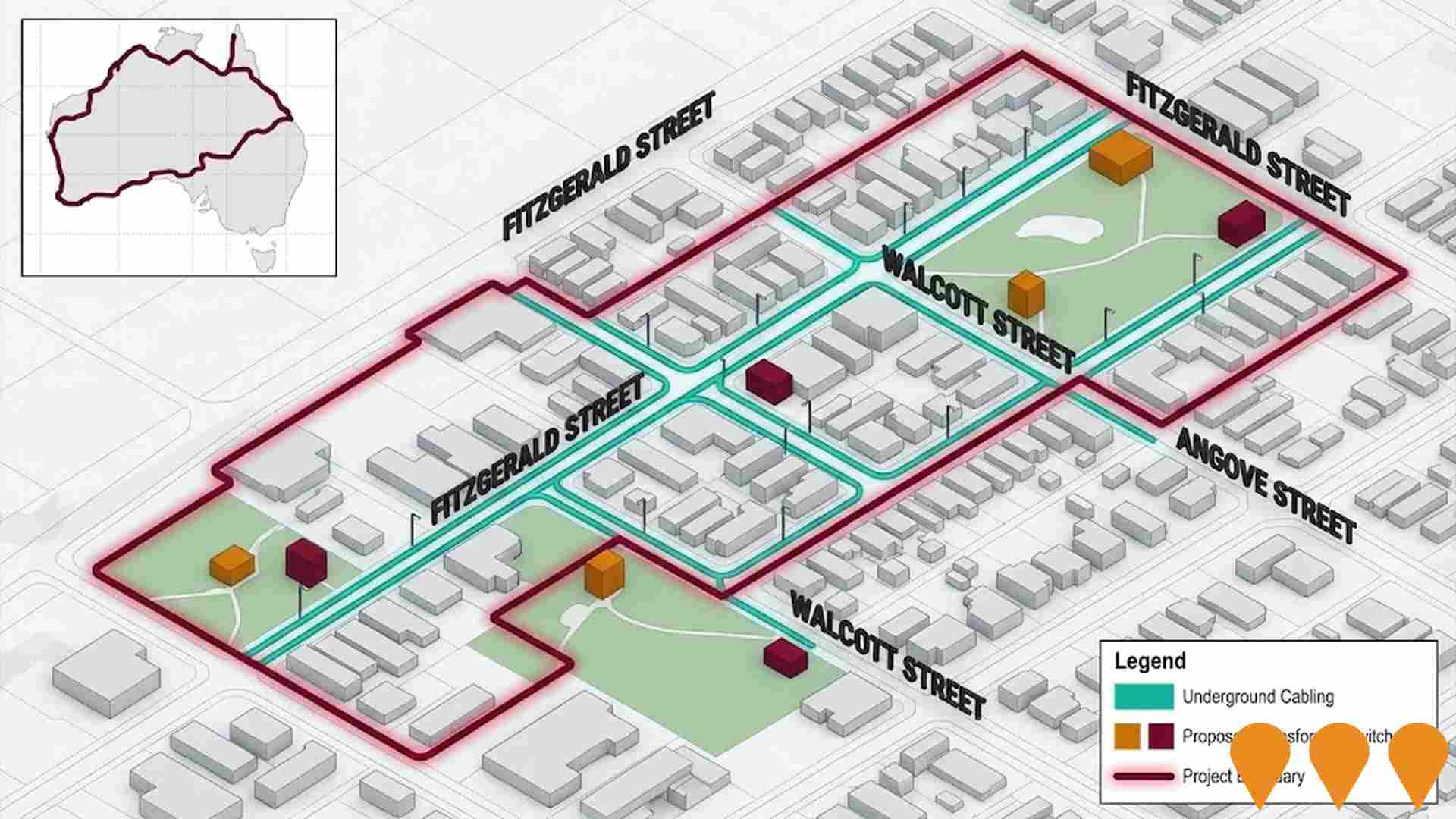
Scarborough Beach Road Streetscape Upgrade
City of Vincent planning major streetscape improvements to Scarborough Beach Road through Mt Hawthorn. Includes new pedestrian crossings, cycling infrastructure, street trees, lighting and road surface upgrades to improve connectivity and safety.

City of Stirling Infrastructure Program 2024-25
Comprehensive infrastructure upgrade program across City of Stirling including road improvements, park upgrades, community facilities and drainage works. Serving population of 243,000+ across 100km2 area.
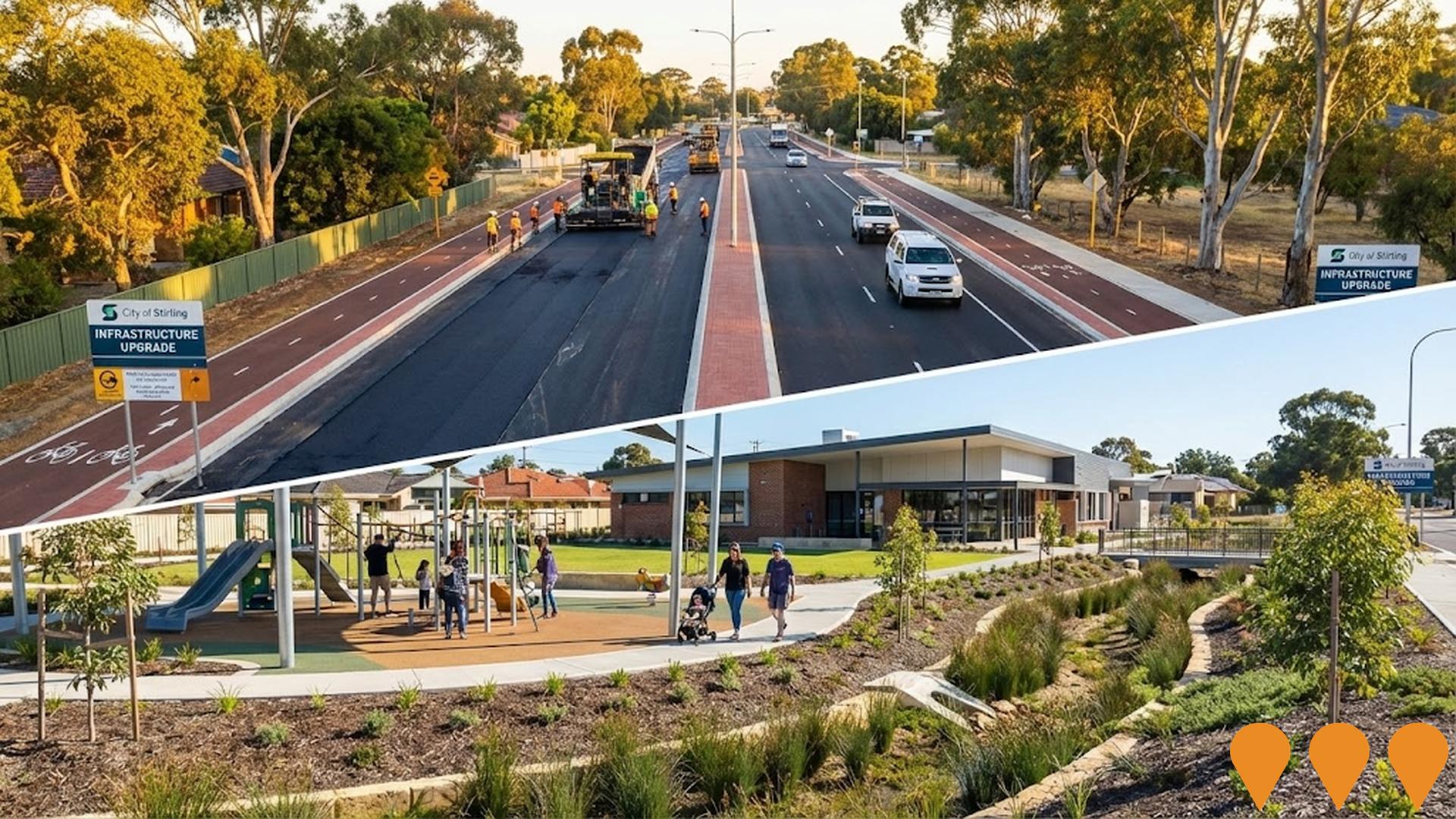
Targeted Underground Power Program - Joondanna, Osborne Park, Tuart Hill
Underground power infrastructure project that will provide thousands of WA properties with a safer and more reliable power supply. Distribution powerlines will be placed underground, with transmission lines remaining overhead. Construction expected to begin in mid-to-late 2025 for the Joondanna area.
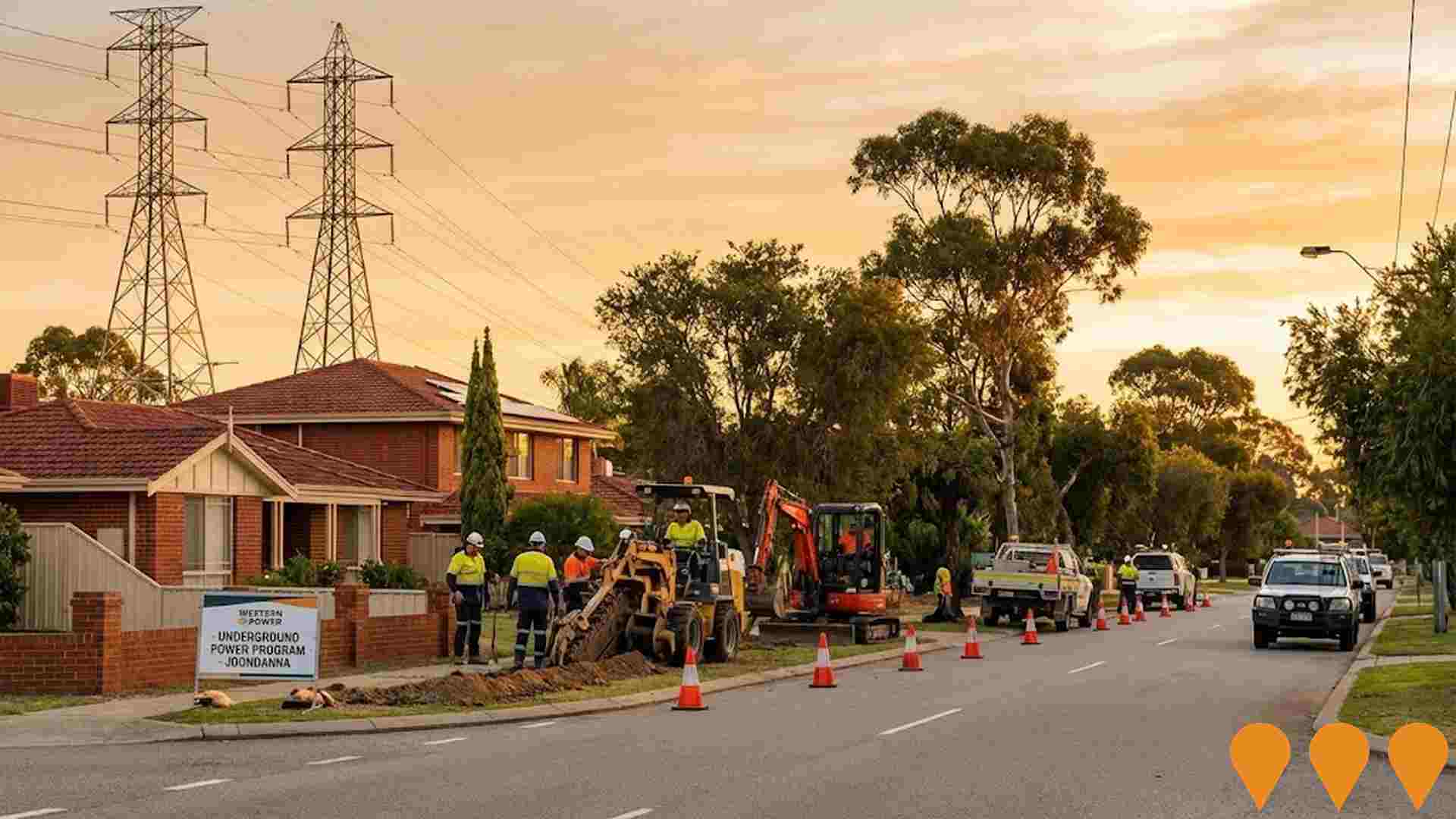
Employment
Employment conditions in Yokine - Coolbinia - Menora demonstrate exceptional strength compared to most Australian markets
Yokine-Coolbinia-Menora has a highly educated workforce with strong professional services representation. Its unemployment rate was 2.4% in June 2025, below Greater Perth's 3.9%.
Employment growth over the past year was estimated at 4.6%. As of June 2025, 10,925 residents were employed with an unemployment rate of 1.5% lower than Greater Perth's. The dominant employment sectors are health care & social assistance, professional & technical, and retail trade. The area specializes in professional & technical jobs, with a share 1.4 times the regional level.
Mining shows lower representation at 5.1%, compared to the regional average of 7.0%. Employment opportunities locally appear limited as indicated by Census working population vs resident population count. Over the year to June 2025, employment increased by 4.6% while labour force grew by 4.0%, reducing unemployment by 0.5 percentage points. Greater Perth recorded employment growth of 3.7% with unemployment rising slightly. Jobs and Skills Australia's May 2025 national employment forecasts suggest a potential five-year growth of approximately 6.8% and ten-year growth of around 14.0% for Yokine-Coolbinia-Menora, based on industry-specific projections applied to its current employment mix.
Frequently Asked Questions - Employment
Income
The area exhibits notably strong income performance, ranking higher than 70% of areas assessed nationally through AreaSearch analysis
AreaSearch's latest postcode level ATO data for financial year 2022 shows that income in Yokine - Coolbinia - Menora is extremely high nationally. The median income is $62,106 while the average income stands at $82,636. This contrasts with Greater Perth's figures of a median income of $58,380 and an average income of $78,020. Based on Wage Price Index growth of 14.2% since financial year 2022, current estimates would be approximately $70,925 (median) and $94,370 (average) as of September 2025. The 2021 Census data indicates that personal income ranks at the 71st percentile ($931 weekly), while household income sits at the 50th percentile. Income brackets show that the $1,500 - 2,999 bracket dominates with 27.7% of residents (5,146 people). High housing costs consume 15.5% of income, but strong earnings still place disposable income at the 51st percentile. The area's SEIFA income ranking places it in the 7th decile.
Frequently Asked Questions - Income
Housing
Yokine - Coolbinia - Menora displays a diverse mix of dwelling types, with above-average rates of outright home ownership
In Yokine-Coolbinia-Menora, as per the latest Census, 46.5% of dwellings were houses, with 53.4% being semi-detached homes, apartments, or other types. This contrasts with Perth metro's 59.6% houses and 40.4% other dwellings. Home ownership in Yokine-Coolbinia-Menora stood at 31.0%, similar to Perth metro's level. Mortgaged dwellings accounted for 33.2%, while rented ones made up 35.8%. The median monthly mortgage repayment was $2,000, higher than Perth metro's average of $1,950. The median weekly rent in the area was $325, compared to Perth metro's $350. Nationally, Yokine-Coolbinia-Menora's mortgage repayments were above the Australian average of $1,863, while rents were below the national figure of $375.
Frequently Asked Questions - Housing
Household Composition
Yokine - Coolbinia - Menora features high concentrations of lone person households and group households, with a lower-than-average median household size
Family households constitute 61.1% of all households, including 25.7% couples with children, 26.2% couples without children, and 8.1% single parent families. Non-family households account for the remaining 38.9%, with lone person households at 35.0% and group households comprising 3.8%. The median household size is 2.2 people, which is smaller than the Greater Perth average of 2.4.
Frequently Asked Questions - Households
Local Schools & Education
Yokine - Coolbinia - Menora shows strong educational performance, ranking in the upper quartile nationally when assessed across multiple qualification and achievement indicators
Educational attainment in Yokine-Coolbinia-Menora exceeds broader benchmarks. 39.7% of residents aged 15+ hold university qualifications, compared to 27.9% in WA and 29.0% in the SA4 region. Bachelor degrees are most common at 27.4%, followed by postgraduate qualifications (8.6%) and graduate diplomas (3.7%). Vocational credentials are also prevalent, with 28.0% of residents aged 15+ holding such qualifications - advanced diplomas (11.8%) and certificates (16.2%).
Educational participation is high, with 26.3% of residents currently enrolled in formal education. This includes 7.5% in primary education, 7.2% in tertiary education, and 6.2% pursuing secondary education. The area's 5 schools have a combined enrollment of 1,338 students. Yokine-Coolbinia-Menora has significant socio-educational advantages and academic achievement (ICSEA: 1106). It comprises 3 primary and 2 K-12 schools. Local school capacity is limited at 7.2 places per 100 residents, compared to the regional average of 14.5, leading many families to travel for schooling.
Frequently Asked Questions - Education
Schools Detail
Nearby Services & Amenities
Transport
Transport servicing is good compared to other areas nationally based on assessment of service frequency, route connectivity and accessibility
Yokine-Coolbinia-Menora has 100 active public transport stops. These are served by 19 bus routes that combined offer 3,786 weekly passenger trips. Residents enjoy excellent accessibility to transport, with an average distance of 171 meters to the nearest stop.
Services run frequently, with an average of 540 trips per day across all routes, equating to approximately 37 weekly trips per stop.
Frequently Asked Questions - Transport
Transport Stops Detail
Health
Yokine - Coolbinia - Menora's residents are healthier than average in comparison to broader Australia with common health conditions slightly more prevalent than average across both younger and older age cohorts
Yokine-Coolbinia-Menora residents show positive health outcomes, with common conditions slightly more prevalent than average across both younger and older age groups. Private health cover stands at 61%, higher than the national average of 55.3%.
Mental health issues affect 8% of residents, while arthritis impacts 7.3%. 70.4% report no medical ailments, compared to 73% in Greater Perth. The area has 22.2% aged 65 and over (4,133 people), higher than Greater Perth's 18.3%. Overall health profile aligns with general population trends.
Frequently Asked Questions - Health
Cultural Diversity
Yokine - Coolbinia - Menora is among the most culturally diverse areas in the country based on AreaSearch assessment of a range of language and cultural background related metrics
Yokine-Coolbinia-Menora has a high level of cultural diversity, with 26.1% of its population speaking a language other than English at home and 38.2% born overseas. Christianity is the predominant religion in Yokine-Coolbinia-Menora, accounting for 46.6% of people. However, Judaism is significantly overrepresented at 6.5%, compared to the Greater Perth average of 1.4%.
In terms of ancestry, the top three groups are English (22.4%), Australian (18.4%), and Other (13.5%). Notably, South African ethnicity is higher than regional averages at 1.4%, as are Polish (1.3%) and Italian (8.6%) ethnicities.
Frequently Asked Questions - Diversity
Age
Yokine - Coolbinia - Menora's population is slightly older than the national pattern
Yokine-Coolbinia-Menora has a median age of 40, which is higher than Greater Perth's figure of 37 and Australia's figure of 38. The area has a notably over-represented cohort of people aged 85 and above (5.0%), while those aged 5 to 14 are under-represented (9.3%). Between 2021 and the present, the population of people aged 75 to 84 has grown from 7.1% to 7.9%. Conversely, the cohort of people aged 15 to 24 has declined from 10.4% to 9.9%. By 2041, demographic modeling suggests that Yokine-Coolbinia-Menora's age profile will evolve significantly. The number of people aged 85 and above is projected to grow by 917 (99%), from 928 to 1,846. Notably, the combined cohort of people aged 65 and above will account for 89% of total population growth, reflecting the area's aging demographic profile. Meanwhile, the cohorts of people aged 15 to 24 and 0 to 4 are expected to experience population declines.

